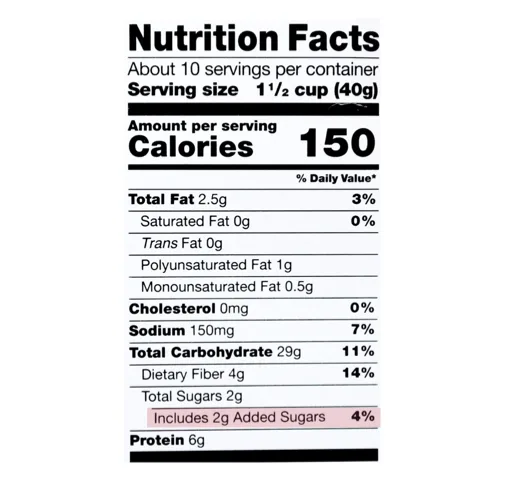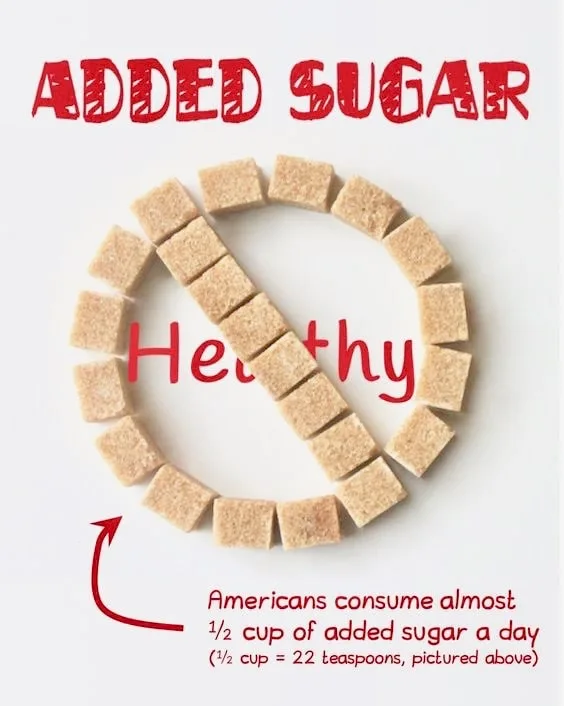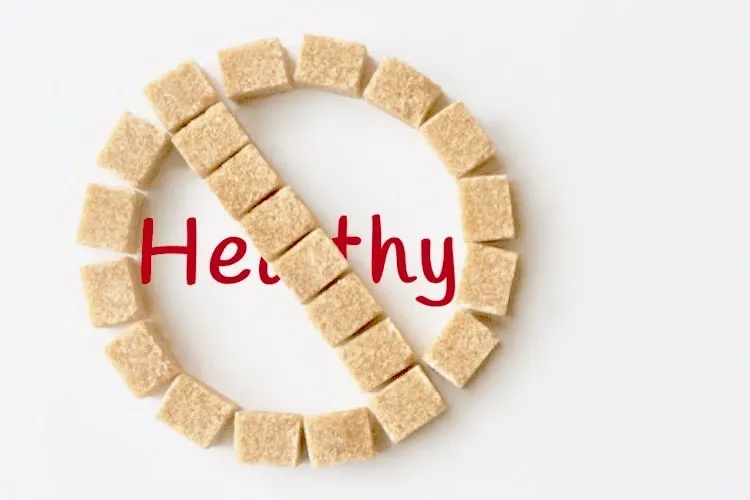We eat a lot of added sugar. In fact, the USDA estimates that Americans consume almost half a cup of added sugar each day.1 This excess consumption of added sugar is bad for our health. Eating and drinking too much added sugar causes us to gain weight and increases our risk of heart disease.
What is added sugar?
The FDA considers added sugar to be any sugar (or syrup) put into food during preparation or processing.
Typical forms of added sugar include:
- Sugar
- High fructose corn syrup
- Brown rice syrup
- Invert sugar
- Molasses
- Tapioca syrup
- Barley malt extract
- Fructose
- Dextrose
- Maple syrup
- Honey
- Coconut sugar
- Fruit juice concentrate
- Vegetable juice concentrate
Yes, you read that correctly. Fruit juice concentrates and “healthier” paleo approved sweeteners such as maple syrup, honey, and coconut sugar count as added sugar.2
What are the health effects of eating too much added sugar?
Excess added sugar consumption is associated with:
- Excess weight gain
- Increased triglyceride levels (a type of fat in your blood, high levels are linked with heart disease)
- Elevated blood pressure
- Consumption of lower quality foods
A full summary of the health effects of eating too much added sugar can be found in this in-depth post.
How much added sugar is okay to eat?
There is currently no clinical data that supports a healthy threshold of added sugar. Current recommendations for added sugar limits are based on percent of total calorie consumption. The American Heart Association (AHA) currently has the most stringent recommendation for added sugar intake:3,4
- Women: no more than 6 teaspoons (25 grams) a day
- Men: no more than 9 teaspoons (36 grams) a day
- Children: no more than 5 teaspoons (20 grams) a day
A full summary of the various recommendations for added sugar intake can be found in this in-depth post.
Sources of added sugar
Sweetened beverages like soda, sports drinks, and coffee drinks account for the majority of the added sugar we consume. In fact, one 12 oz soda contains 39 grams of added sugar and a 16 oz (grande) Mocha Frappuccino contains 46 grams of added sugar.5,6 Drinking just one of these beverages will put you well over the AHA’s recommended daily allotment of added sugar. And that is before you actually eat anything. This is a problem because most of the foods we eat contain hidden added sugars.
Added sugar is also a key ingredient in many of the convenience foods we eat every day. Chances are if you have a favorite breakfast cereal, granola bar, or even flavored yogurt, that favorite probably contains excessive amounts of added sugar. Also, added sugar can be found in many prepared savory foods. Bread, soup, and tomato sauce often contain hidden amounts of added sugar that can easily put you over the AHA’s daily recommendation even without drinking a sweetened beverage or eating a sweet treat.
How to identify added sugar in food
In 2020, the FDA will require packaged foods to have an updated nutrition facts label that specifically calls out the amount of added sugar.7 Some food manufacturers have already implemented the new nutrition facts label (pictured below). However, the new labels will show a % Daily Value of added sugar based on the FDA’s recommended daily intake, which is double that of the AHA’s.

How can you know how much added sugar is in a product? Before this new label is implemented, it is hard, especially if the food contains sugars that are naturally present (i.e. dairy or fruit). A previous post includes an estimate for determining the amount of added sugar contained in flavored yogurt.
For foods that do not contain natural sugars (i.e. bread or pasta sauces), it is easier to estimate the amount of added sugar they contain. Simply look at the sugar content on the nutrition facts label.
Remember: read the ingredient list of a packaged food. Ingredients are listed in decreasing order from most to least. The closer a sugar ingredient is to the beginning of the list, the higher its relative proportion in the food.
Takeaways about Added Sugar
If we want to improve our long-term health, it is critical to reduce the amount of added sugar in our daily diet.
Start by understanding just how much added sugar you eat each day. Then cut out foods (and drinks!) with a lot of added sugar and replace them with similar foods that have less or no added sugar.
If you have children, help them eat less added sugar too. Their long-term health depends on it.

References:
- USDA, ERS (Economic Research Service), Sugar and Sweeteners Outlook. Data compiled from Table 51, Table 52, and Table 53. (link)
- Definition of Added Sugar, FDA Federal Register, May 2016, § 101.9(c)(6)(iii) (link)
- Added Sugars and Cardiovascular Disease Risk in Children. Circulation. August 22, 2016 (link)
- Dietary Sugars Intake and Cardiovascular Health. Circulation. 2009;120:1011-1020, (link)
- Original Coca-Cola Nutrition Information, Coke Website (link)
- Starbucks Nutrition Information, Starbucks Website (link)
- Changes to the Nutrition Facts Label, FDA Website, May 2016 (link)
